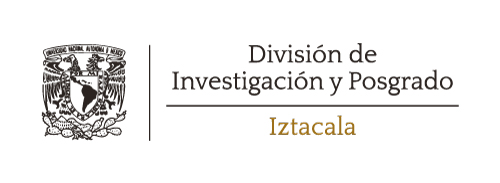Title of the book: “Arid and Semi-Arid Zones of Mexico: A Comprehensive Exploration of Biodiversity, Ecology, and Conservation”
https://benthambooks.com/future-series-by-subject/life-sciences/sub-category/ecology
Abstract:
Arid and Semi-Arid Zones of Mexico: A Comprehensive Exploration of Biodiversity, Ecology, and Conservation” is an extensive work that delves into the rich biological and ecological diversity of Mexico’s arid and semi-arid regions. This book offers a multidimensional perspective, encompassing the biotechnological potential, ecological insights, and conservation strategies essential for the sustainable management of these unique ecosystems.
The volume begins by presenting a detailed overview of the biodiversity in Mexico’s arid and semi-arid zones. It emphasizes the importance of understanding the unique characteristics of these ecosystems, setting the stage for subsequent discussions on conservation and sustainable development. The book is structured into five distinct parts, each highlighting a critical aspect of these regions.
Part 1 focuses on the biodiversity of these areas, exploring the rich variety of microorganisms, animal groups, and plant forms. It includes in-depth analyses of soil microorganisms, the diversity of ant groups, amphibians, reptiles, birds, and the cactological diversity of Mexico, underscoring the ecological significance of these groups and forms.
Part 2 shifts the focus to secondary metabolites and biotechnological resources. It examines the medicinal flora of arid zones and their secondary metabolites, along with the volatile compounds of medicinal plants, highlighting the potential of these natural resources in pharmaceutical and biotechnological applications.
In Part 3, the book explores the management of socio-ecological systems. It provides a physical-geographical perspective of regions like Puebla and Hidalgo and discusses the challenges and strategies in managing socio-ecological systems and sustainability in these areas. This part also delves into agroforestry management systems, offering insights into sustainable practices.
Part 4 delves into the ecology and evolution of these regions. It covers topics such as state-and-transition models, structural adaptations of plant forms, ecophysiology of Cactaceae, and the adaptive strategies of mesquite in arid zones. This part also includes a critical analysis of the genetics of Agaves, highlighting its ecological and evolutionary significance in these regions.
Finally, Part 5 addresses the conservation of arid zones. It discusses conservation priority areas under climate change and the application of Geographic Information Systems (GIS) in planning and land management, providing a forward-looking perspective on sustainable management and conservation strategies.
Targeted at academics, researchers, and practitioners in the fields of biotechnology, ecology, environmental science, and sustainable development, this volume aims to provide a comprehensive and multidisciplinary understanding of the ecological intricacies and conservation challenges of Mexico’s arid and semi-arid regions. Through empirical research, case studies, and theoretical insights, the book contributes significantly to the global discourse on sustainable environmental practices and the role of biotechnology in achieving these goals.
Appendices/Apéndices
APPENDIX A: Box plot for each of the 15 environmental domains. a) average annual temperature; b) maximum temperature of the warmest period; c) minimum temperature of the coldest period; d) annual precipitation; e) precipitation of the wettest period; and f) precipitation of the driest period. The colors indicate the environmental group to which they belong.
APPENDIX B: : Ant species recorded in the arid and semiarid zones of Mexico. The symbol asterisk (*) indicates exotic species, and double asterisk (**) address exotic and invasive species.
Appendix C: List of the 309 bird species analyzed for arid and semi-arid regions. The taxonomic nomenclature of the species was based on the IOC Bird List [19]. The scrublands and Mesquite-associations grouped the vegetation types indicated in Figure 5. The data were obtained from digital databases [10]. For those taxa listed in the Mexican Red List (NOM-059-SEMARNAT-2010) is presented their risk category: sc (no category), Pr- (special protection), A (threatened), and P (endangered). Additionally, the risk category of those taxa included in the Red List of the IUCN (International Union for Conservation of Nature) is indicated as: LC (least concern), NT (near threatened), VU (vulnerable), NR (not recognized), EN (endangered), and CR (critically endangered). The level of endemism was categorized as CE (cuasi-endemic), NE (endemic), Exo (exotic species), NE (non-endemic), and SE (semi-endemic). Residency status considers the category present in most of the species’ distribution.
Appendix D: List of cactus species documented for Mexico. The taxonomic author was verified on the web page of the International Plant Names Index. At the end of this appendix, four taxa recognized as natural hybrids were included. In parenthesis is presented the number of climatic domains in which the taxon was geographically located. An asterisk indicates that such a taxon was located outside of some climatic domain. Those taxa marked in bold letters indicated that they were only recorded in a single domain.
Appendix E: List of cactus species recorded in each of the 15 climatic domains analyzed. For those domains that had portions in areas geographically separated (3, 4, 14, 15), their species are presented for each of those portions.
Appendix F: Database of medicinal plants of the arid and semiarid areas of some Mexican states.
Appendix G: List of 519 cactus species documented for Mexican arid and semiarid regions [14]. For each taxon is presented its risk category assigned in the federal law of the NOM-059-SEMARNAT-2010 [5]: A (threatened), Pr (special protection), and P (endangered). The last column presents the category of Natural Protected Area [3] in which the taxon was located: RB (Biosphere Reserve), APRN (Areas for Protection of Natural Resources), APF&F (Protected Area of Flora and Fauna), MN (Natural Monument), and PN (National Park). The empty rows indicate that taxon is not listed or included in protected areas.
